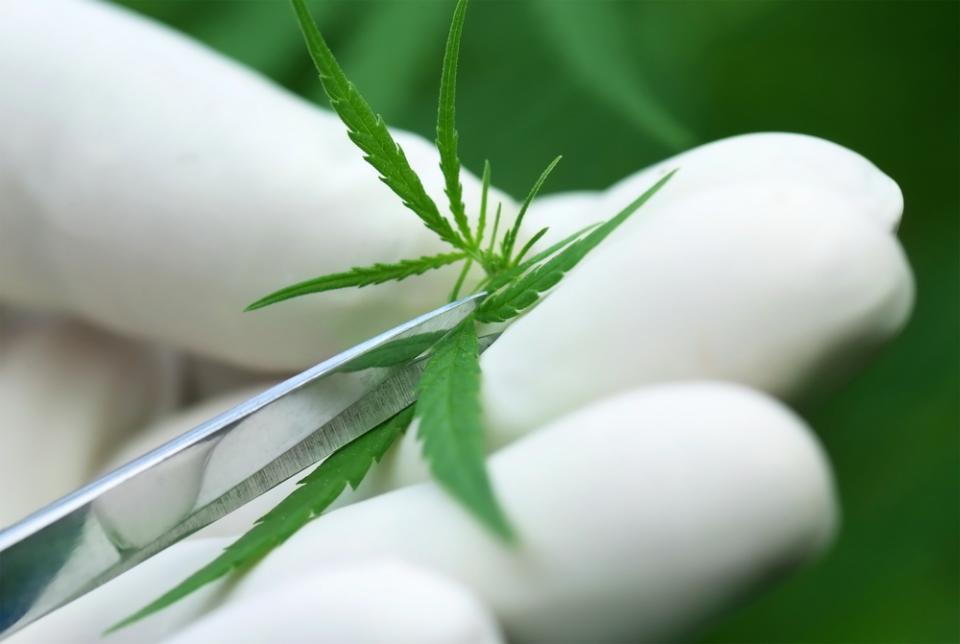The end result of a fully-grown Cannabis plant will be determined by what occurs during the entire life cycle of the plant. The period from the seedling stage until the flowering stage is a big difference-maker deciding how efficiently your crop will produce high-grade flowers. Below you'll find various techniques, how to apply them and when to apply them for the best end results.

By Stoney Tark
Why Train Plants?
It is a good idea to think about how a Cannabis plant that is left untrained will grow. Usual characteristics of a plant left to its own devices indoors or outdoors will be tall, lanky, producing small buds and a lot of schwag flower. The reason why plant-training is incorporated into a garden in the first place is to prevent plants from growing inefficiently and to grow with a set canopy shape in mind. Those growers who are hands-on with their plants can utilize multiple techniques, each with a different purpose.
Low-Stress Training
This style of training requires tying and bending to manipulate the structure of the canopy in the vegetative period. Using twine or a thick string, bending the crown shoot down below the remaining internodes and applying a set pressure without snapping the upper stem is one form of low-stress training. Using string to always lower the crown shoot is an excellent way to promote a bushy canopy that is growing with equal symmetry. Other types of low-stress training involve topping plants, or simply removing the top shoot to allow auxiliary shoots to grow as two main crown shoots.

High-Stress Training
Requiring more of a heavy-handed nature, super-cropping is a technique classified as high stress. Super-cropping means to purposely create a break within the branch of the plants. This can be applied to several branches and can also be used for canopy control. By applying pressure in a certain way, the inner cell walls of the plant will be crushed and forced to repair.
Growers will often bend the tops of their plants down in accordance with a 90-degree angle. The plant responds to this break in the same way our bones respond. A calcium deposit is formed around the break causing this part of the structure to become stronger than before. As the plant produces auxins and hormones to repair the damage, the vitality and vigor of the Cannabis plants will increase.
Step By Step Guide
This guide is based on a 6-week vegging period. By following this guide, your canopy before the flowering period will grow as efficiently as possible, with no popcorn and lower schwag buds.
Week 1:
Allow your seedling to grow until the first top shoot is established. Your plant should be 10-15 cm high and now you can carefully remove the top shoot. I personally would advise using a clean pair of nail clippers and getting as close to the base of the shoot as possible. Cut away until you reveal a light green, plant flesh. When I perform this method, I always end up with a perfectly clean cut, with symmetrically-growing top shoots shortly afterward. The only leaves that are left on after topping are the cotyledon leaves, so now you will wait for a week for the new shoots to grow in place of the one that was just removed.
Week 2:
During this time, you will notice new freshly growing shoots that over the next week will be growing back at the normal rate with new growth emerging from the top. The cotyledon leaves will be quite large now and the new growing tips will be producing the third internode. You will need to wait until the newest tips are big enough to perform another topping with a pair of nail clippers.
Week 3:
The plant will now resemble a Y shape from the main stem with two growing tips, so now you will want to create another V shape as you now remove the two new tips, causing the plant to have a total of four crown shoots.
Week 4:
Looking down from above, you will see as in week 2 that the previously topped growth is growing back and will now grow as four. The frame of the plant from the base resembles a Y shape with another two V shapes above. Allow the top growth to fill out so there are four evenly growing crown shoots.

Week 5:
Now your plant has multiple tops and a distinctive symmetrical frame, you can now begin to clear away the cotyledon leaves, as well as any other leaves that are now below the four crown shoots. When this is correct, the stems will be totally bare and the only growth left will be the top nodes of the crown canopy.
Week 6:
As the plants grow more mature and with a hardwood characteristic, this is where you will want to apply the super cropping technique. The best place to do this is below the canopy growth. Snap and twist each of the four branches and cause a break in the branch. The damage can be very little but, when performed correctly, a wooden knuckle will appear over the damaged area, the same way our knuckle holds our fingers together. Allow the plants to recover from any super-cropping before inducing flowering.
When Not To Train
You should never perform plant-training once you have entered the flowering stage. Topping plants, super cropping and tying down can be counterproductive if done too late on. If the plants experience too much stress, as they are transitioning to flowering, it could lead to stunted growth or, at worse, hermaphrodite plants. The time you keep your plants in the growing phase will determine how excessive you can be in your own garden with the techniques listed above.





Give us your feedback
Your rating (between 1 and 5)
1 2 3 4 5Leave a comment